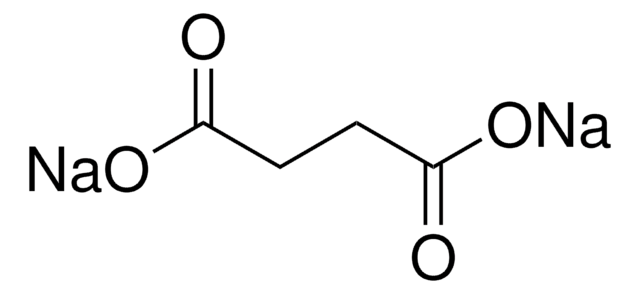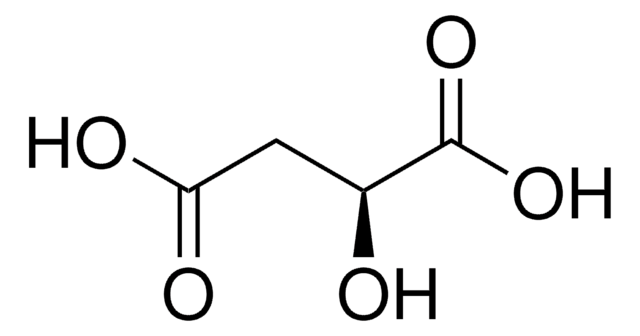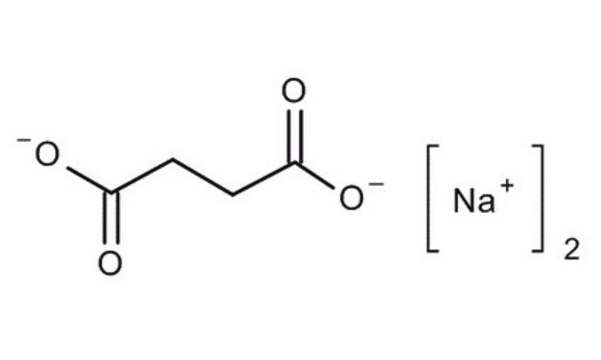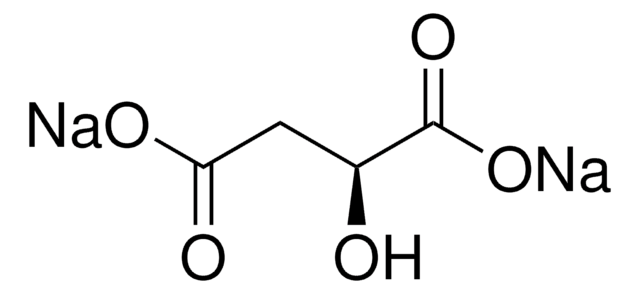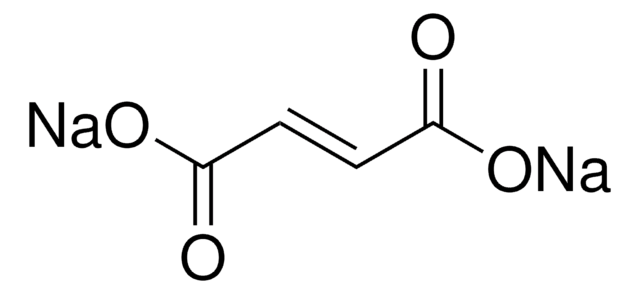S2378
Sodium succinate dibasic hexahydrate
ReagentPlus®, ≥99%
Synonyme(s) :
Butanedioic acid disodium salt, Succinic acid disodium salt
About This Item
Produits recommandés
Niveau de qualité
Gamme de produits
ReagentPlus®
Pureté
≥99%
Solubilité
H2O: 100 mg/mL, clear, colorless
Chaîne SMILES
O.O.O.O.O.O.[Na+].[Na+].[O-]C(=O)CCC([O-])=O
InChI
1S/C4H6O4.2Na.6H2O/c5-3(6)1-2-4(7)8;;;;;;;;/h1-2H2,(H,5,6)(H,7,8);;;6*1H2/q;2*+1;;;;;;/p-2
Clé InChI
ZBTUYCUNQBRXOR-UHFFFAOYSA-L
Vous recherchez des produits similaires ? Visite Guide de comparaison des produits
Catégories apparentées
Application
Informations légales
Code de la classe de stockage
11 - Combustible Solids
Classe de danger pour l'eau (WGK)
WGK 1
Point d'éclair (°F)
Not applicable
Point d'éclair (°C)
Not applicable
Équipement de protection individuelle
dust mask type N95 (US), Eyeshields, Gloves
Faites votre choix parmi les versions les plus récentes :
Déjà en possession de ce produit ?
Retrouvez la documentation relative aux produits que vous avez récemment achetés dans la Bibliothèque de documents.
Les clients ont également consulté
Articles
Learn about the four membrane-bound protein complexes that make up the electron transport chain metabolic pathway supplying energy as ATP for cellular respiration.
Get to know the Tricarboxylic acid (TCA) cycle to better inform your research in biochemistry, metabolomics, or related fields concerned with this metabolic pathway and its enzymes, by-products, or intermediates.
Notre équipe de scientifiques dispose d'une expérience dans tous les secteurs de la recherche, notamment en sciences de la vie, science des matériaux, synthèse chimique, chromatographie, analyse et dans de nombreux autres domaines..
Contacter notre Service technique
